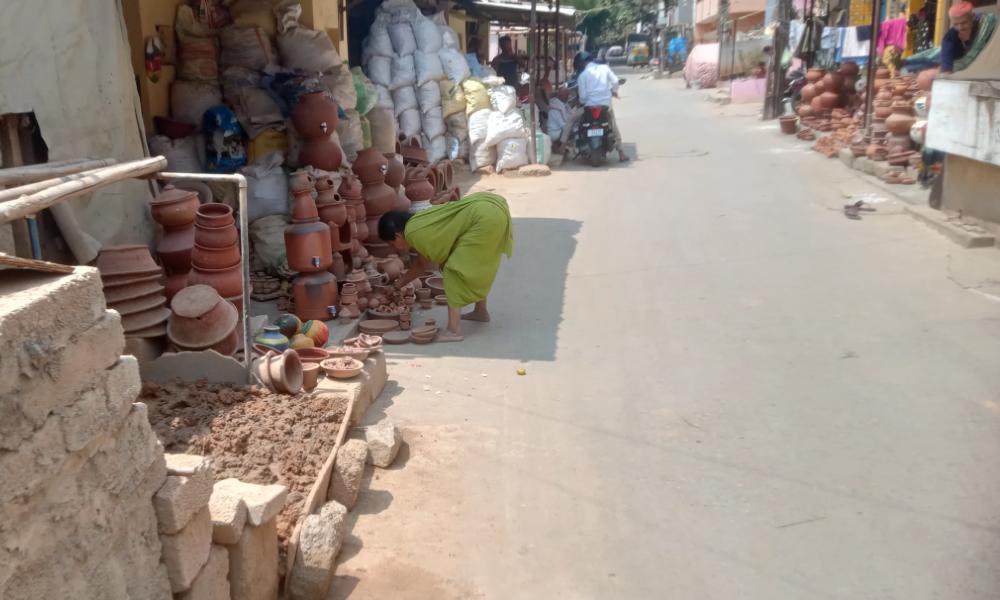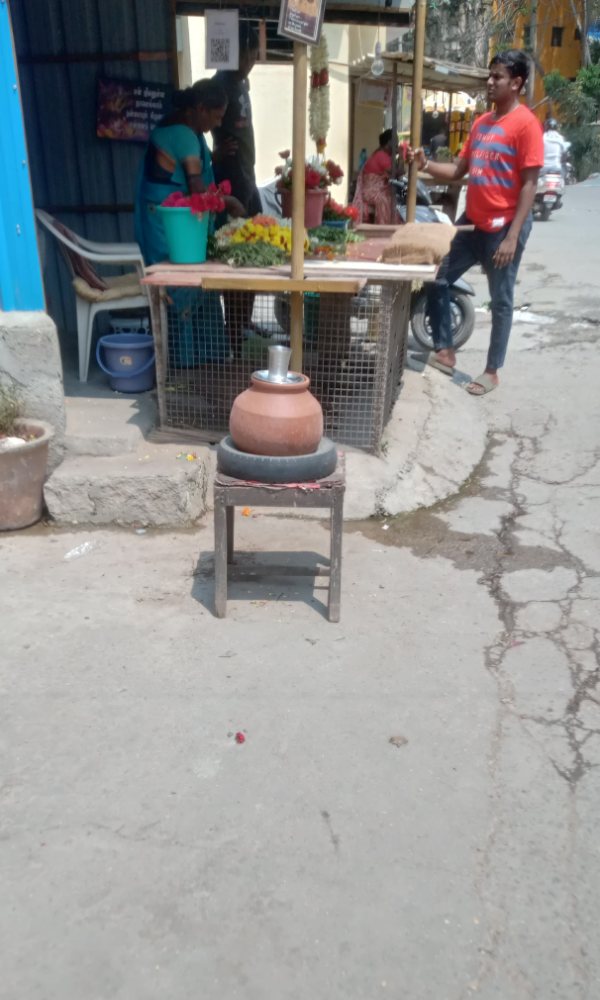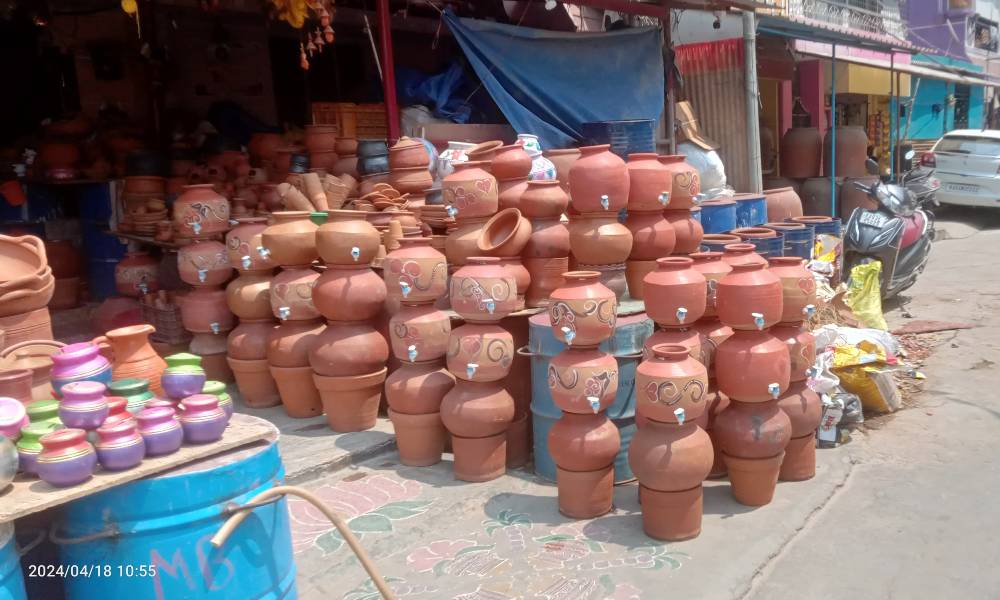As mercury levels in the city rise, Bangalore’s Pottery Town welcomes several old and new consumers.
You might not like the kind of heat Bangalore is currently battling with. The scorching sun, hot winds and all the sweating might ruin your day. But for the potters in the city, the heat is proving to be good news. Potters from Pottery Town and other parts of the city say the unprecedented heat this year is driving the sales of earthenware, as more consumers choose earthen pots to store and cool water.
Gouriamma, a potter from Pottery Town said sales at her shop have already nearly doubled this year, compared to previous years. “In the last two months alone, we sold around 350 to 400 pots,” she said. Her son added that this was probably the first summer he was seeing so many pots being sold.
Raghunath, another potter from pottery town said medium sized pots with long necks is the most sold item in his shop, and about one in four customers buy them. “The demand for these pots has seen a significant increase. Consumers prefer them because they can keep water cool for a long time and can hold enough water for about four people,” he said. He added that apart from household consumers, roadside shop owners also buy earthen pots to keep in their shops. He further said that a medium-sized pot costs Rs. 350, which most consumers find reasonable.

Potters agreed that unpainted medium sized pots (both with and without taps) and campers (big bottles with caps) are being sold the most. Hiranand, a potter said, “Campers are in high demand because they can be carried and are easy to drink water from.”
They added that customers tend to avoid painted earthenware because they say such pots do not cool water like the unpainted ones do.
Dayananda, a customer said he decided to buy a clay pot only this summer because the weather has become excessive hot. “We drink refrigerated water, but when kept in for long hours, it becomes too cold to drink and we then have to mix it with normal water. The clay pot will keep water cool for a long time and you can directly drink from it,” he said.
Sudhamma who owns a flower shop near Pottery Town keeps an earthen pot in her shop. She said that she stores water in it both for drinking and sprinkling on flowers. “In this heat, only cold water can quench your thirst. I have bought three earthen pots, two for my home, and one for keeping in my shop,” she said.

A 2022 article published by Indian Institute of Management, Bangalore outlines the difficulties faced by potters in terms of earning livelihood. Traditional potters across the country are in crisis because they cannot compete with machine made pottery. But one of the main obstacles towards their growth is falling demand for earthenware, as the article highlights. “Poor market linkage is another drawback,” the article states. Promoting awareness among the public about the positive outcomes in using earthenware all year round and not seasonally could help the potters’ community, authors of the article suggest.
Apart from hot summers, another time when Bangalore’s pottery town witnesses good business is during Ganesh Habba, when Ganesha idols of various shapes and sizes flood the market.
Anirudh Gaurang, senior Research Associate at the Indian Institute of Public Health, Hyderabad, however warned that one must be careful before buying clay pots. He said the public should buy unglazed clay pots, as glazed ones are treated with harmful chemicals. “Unglazed clay pots are more porous, allowing for quicker passage of heat,” he added. The public should also be wary of purchasing pots that are deep red in colour, as they might contain harmful artificial colours which can seep into the food or water stored, he further said.
Akshay Heblikar, director of the NGO Eco-Watch said the use of earthenware should be promoted because apart from uplifting artisans’ communities, they are also sustainable and environment friendly products. “It is like a refrigerator which doesn’t require electricity. Also, the clay decomposes back to nature without polluting the environment. Its functionality causes zero exploitation of resources,” he said. Earthen pots are especially feasible for masses who can’t afford expensive water dispensers and refrigerators; however their usage should not be limited by economic backgrounds.
He also urged consumers to extend support to local artisans by not shopping for earthenware in online markets.




